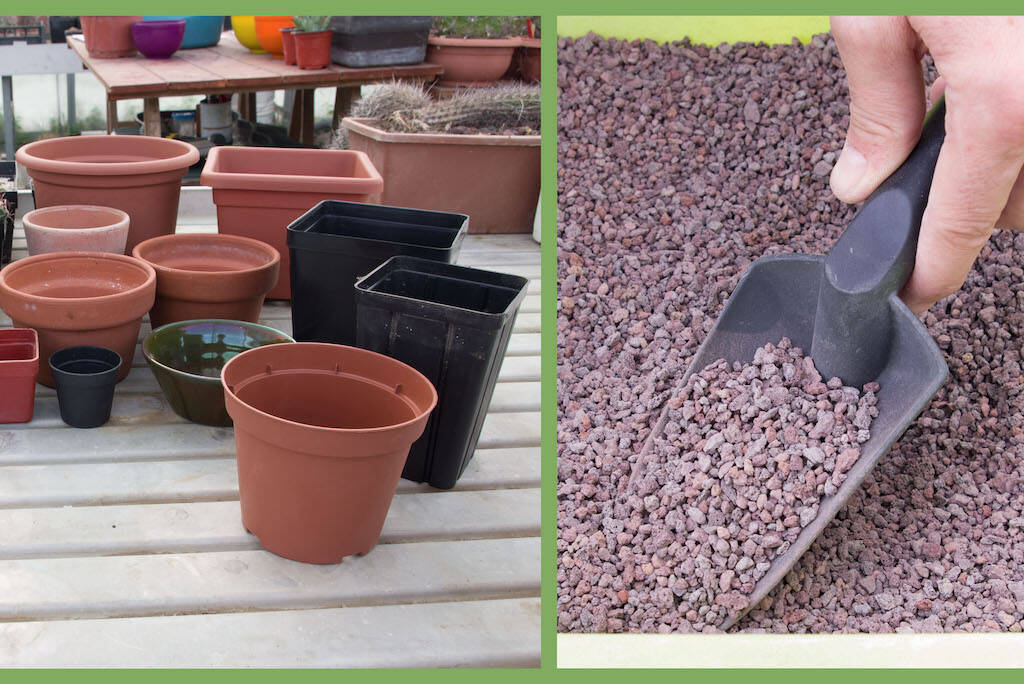Autumn comes into full swing and with the arrival of cold days, succulents plants require less “attention” from us. In this period, at least in Northern Italy or in middle-north Europe, the plants must already be in their winter location, protected from bad weather and excessive cold. There is time for repotting, since it is better to wait until mid or late winter for this type of operation. Watering is obviously suspended and all we have to do is carry out some preventive treatments to protect the succulents from fungi and mold during the winter months. So, what better time than this to dedicate yourself to tidying up the pots, jars, soil and materials needed for the substrates? And this is where a far from banal question arises for many growers: pots and aggregates (inert) are expensive, is it really worth throwing them away and buying new ones or is it possible to recycle all this material? The answer, clearly, is yes: recycling is a must, but be careful, under certain conditions and making sure that everything we are going to reuse is perfectly clean and free of parasites, spores, mold, dust, etc.
The following article is dedicated to this theme, which goes into detail about the cleaning and sterilization of vases (plastic and terracotta) and the materials used for the substrates (pumice, lapillus, gravel, etc.) which have been set aside after the last repottings carried out in recent months. (…)
Premise
The recycle of pots and aggregates is common practice. Obviously it is not always possible to recycle everything, but a good part of what has been used for the cultivation of our plants can easily be used for future repotting, as long as the materials are thoroughly cleaned and sterilized. Clearly, broken pots and peat must be eliminated since they have exhausted their “cycle” (the peat has already been exploited and would be of little use), but the first major distinction to make is whether those materials (pots and substrates) have given hospitality to plants in perfect health or if they have hosted plants that have died from rot or are otherwise affected by parasites. Let’s see everything in detail by dividing the two categories: vases and inert materials.
Recycle pots
Recycling pots, especially if you use plastic ones, is a must. First of all, we contribute (in our own small way, clearly) to the reduction of plastic production; secondly, you save money, because plastic vases are very long-lasting and can be washed extremely easily. If you use terracotta vases, recycling also takes on an additional value: you can reuse particular vases, perhaps “valuable” or in any case large and therefore expensive.
PLASTIC POTS – If no plant has died in the pot, you can limit yourself to a thorough washing with warm water and a detergent product. Even in these cases, however, adding a little bleach is always useful to eliminate germs and bacteria that may have formed while the vases were stacked waiting to be recycled. For washing, all you need is a sponge with a slightly abrasive side and a little bit of patience. Important: if you use bleach you should wear rubber gloves, the classic gloves for household work!
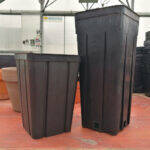
However, if a plant had died in the pot, you can decide to throw away the old container to eliminate the risk that the new “tenant” could contract the same fungus, or carry out a more in-depth operation. In this second case, rinse the vases well, then place them in a basin containing water and bleach and leave them to soak for a few hours (even a whole night if you want). After this period of time, wash the vases carefully, trying to reach every internal corner, with a slightly abrasive sponge, always with water and bleach. At the end, wash a second time with soap and water and rinse thoroughly. Once the vases are clean it is advisable to leave them in direct sun for at least a day: even intense sun helps to sterilize.
TERRACOTTA VASES – Unlike plastic vases, terracotta ones are porous: this is why cleaning is longer and more difficult, since an old terracotta vase may have limescale or greenish stains. If the vase is already clean enough, you can wash it carefully with soap and water and a drop of bleach. If, however, the vase is marked by limescale stains or moss residues, it can be immersed in a basin with water to which we add lemon juice, or bicarbonate or vinegar. We leave the vases to soak for a few hours and give them a vigorous wipe with a sponge, using the same water in which they were soaked. Once the “signs of old age” have been removed, proceed by washing the vase with water and soap and then placing it in direct sunlight for at least a day, to ensure that all the water evaporates from the porous walls.
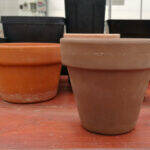
If a plant has died from rot in the terracotta pot, there are two cases: if the pot is already old, chipped or of negligible value, it can be thrown away. However, if the vase is valuable, large or has a certain value, it can be cleaned thoroughly and then sterilized. The cleaning procedure is the same as described above, while as regards sterilization you can use the old boiling method (obviously if the jar is not huge): you place it in a cooking pot, fill everything with water and turn on the heat, leaving the vessel to “cook” until it boils. Once the water boils, turn it off and leave the jar to soak for at least twenty minutes. Alternatively, you can immerse the terracotta pots in water, adding an “aggressive” sanitizing solution, such as bleach (leaving them to soak for at least an hour). Once the vase has been cleaned and sterilized, it is placed in direct sunlight for at least a day, so that it can dry completely.
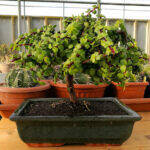
The procedures described above are applicable, up to a certain point, also to enamelled pots usually used for bonsai. In this case, they are usually valuable vases, enamelled on the outside and porous on the inside: all the more reason it is a shame to throw them away. A word of caution when dealing with this type of vase: in these cases it is best to avoid boiling (which could ruin the enamel), preferring bathing in water and bleach. Likewise, it is better to avoid abrasive sponges that could scratch or ruin the enamel.
The choice of vase? Here’s everything you need to know…
Recycle inert
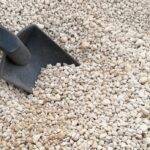
In the cultivation of succulent plants, whether cacti or leafy succulents, many inert materials are used, i.e. materials useful for draining the substrate. The aggregates can be porous or smooth, each one has certain properties and the choice is truly remarkable and it is good to know them to choose the most suitable ones for the mix we want to create. In this article you will find an examination of most of the materials useful for preparing soil for succulents. Having said this, when you dig up the plants and thoroughly clean the roots you will find yourself with entire basins full of the old substrate, which, if done correctly, contains a lot of inert materials. Unlike peat, which becomes depleted over time and with the absorption of nutrients by the plant, aggregates retain their usefulness and this is why (as well as saving money) it is certainly a good thing to recycle them.
As with pots, however, it is important to point out that the substrate in which a plant has died or in which parasites have been found (for example, root cochineal) must be eliminated. The pots, as we have seen, can be washed and sterilized, but in the case of the substrate it is better not to take unnecessary risks: if a plant has rotted in that soil or if we have found parasites in that soil, we throw it away without hesitation.
If, however, the substrate has been recovered from the repotting of perfectly healthy plants (it is essential to carefully check that no parasites nest among the roots) we will be able to recycle it without problems. The first thing to do, once all the old substrate has been collected in buckets or basins, is to sift it, using a fine mesh sieve, so as to separate the actual aggregates from the peat, dust or clay. The fine part, now used, must be eliminated, while the aggregates are deposited in a clean container. Once all the aggregates have been obtained, we move on to sterilization, which is useful even if no plant has died in that substrate.
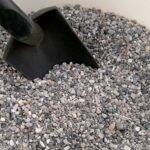
To sterilize inert materials there are different methods: for example, they can be spread on a cloth and sprayed with a non-aggressive disinfectant (let’s avoid bleach) then letting everything evaporate, or they can be boiled, exactly like terracotta vases. Finally, they can simply be spread out on a nylon sheet and left in direct sunlight for at least a week, allowing the sunlight and air to give a good cleaning to pumice, lapillus, gravel, quartzite, etc. In essence, the sterilization process of the aggregates is mild and rapid since if there were no parasites or bacteria present in the substrate that caused the plant to rot, it can simply be deduced that that soil was and is perfectly “healthy”.
Once the cleaning and sterilization operation has been completed, the aggregates can be put aside or used immediately for the composition of a new substrate, adding fresh peat, earthworm humus or any other element useful to the plant that will be repotted (for example chalk for some cactus genera).
Important note: when taking the plants out of the pot it is essential to thoroughly check their health and check that no parasites are nesting among the roots (here you can find a video on root mealybug). Only in this way can we have reasonable certainty that those aggregates can be recycled without problems. When in doubt, it’s better to throw everything away: it would be a shame to put the plants at risk just to save a handful of pumice or lapillus!
SUBSCRIBE TO THE SITE – If you liked this article, subscribe to the site to have access to all the contents for one year or three months depending on the formula you choose. Here you will find terms and conditions.
SUBSCRIBE TO THE NEWSLETTER – If you want to receive the free newsletter every time new content is published (even if you have not subscribed to the site), fill in the fields at this link!
Correlated articles
- Diseases and pests: all the articles
- Choose the right pot
- Substrates: all the articles
- Inert and materials
- Repotting: all the articles
© The texts, videos, photos and graphic elaborations of the site “Il fiore tra le spine” are original material and are covered by copyright. It’s forbidden to reproduce them in any way.


